We had a lovely day for our visit to Hatfield House which has a number of embroidered items that have been dated to the early 17th century including a collection of panels that were described as cushions and a couple of intriguing table carpets. Challe and I went along to have a look, accompanied this time by Natalie (BAC) who has a special interest in the seventeenth century.
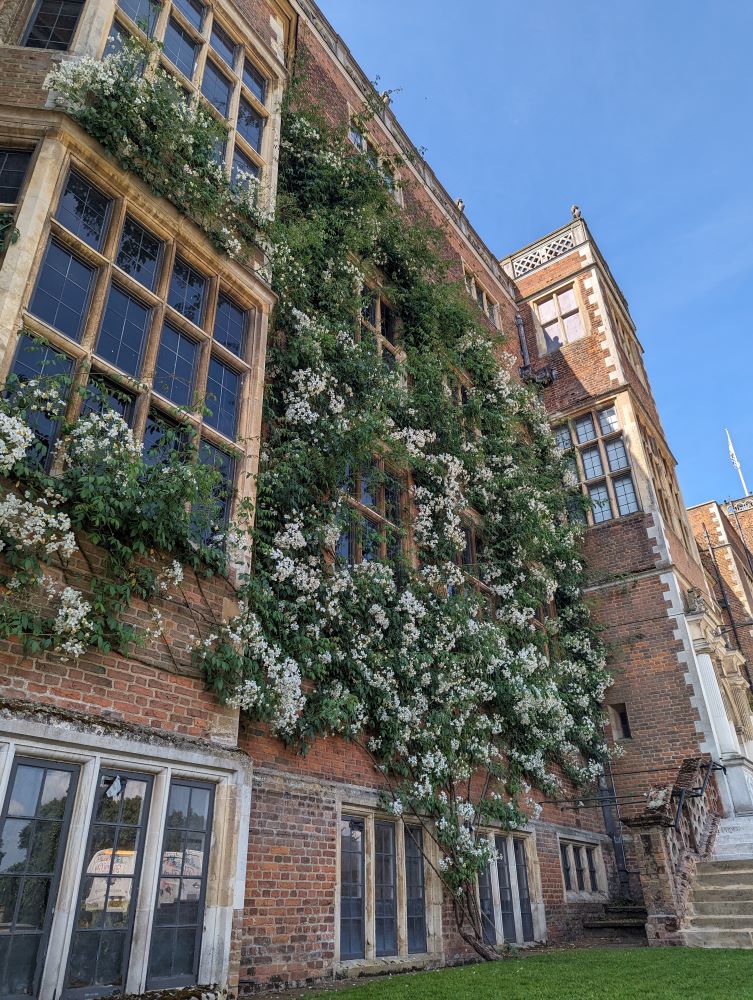
The collection of cushion covers is stored in a large cabinet in the chapel and I have a sneaking suspicion that in the past it may have been used to store smaller religious embroideries such as chalice covers, burses (the ecclesiastical sort not the great seal version), veils and hangings. The house was built in 1611 so they wouldn’t necessarily have been embroidered.

The cushion panels however, fit very neatly into the narrow drawers and all were covered by glass making it impossible to examine the back for details of stitch. We removed the drawers one at a time, carefully placed them on the floor and cleaned the glass. The glass also made it very difficult to photograph therefore the images I took are not as clear as I would like and reflection was impossible to avoid (you can see all of us in the image above and the ceiling of the chapel!) Most pieces are in very poor condition. However, because they have been well used, and because they were not discarded, they provide a more realistic idea of how different styles of embroidery were used for furnishing and how they deteriorate over time with use and consequent repair.

In this collection, there are several examples of the popular needlepoint slip or appliqué incorporating trees, figures, insects and flowers. The shading is not very skillfully executed on the individual elements such as the leaves and flowers, therefore were likely stitched by one of the residents of the house rather than a professional. The canvas slips were originally applied to a variety of ground fabrics such as satin and velvet but many have now reapplied to a dark coloured plain weave ground.
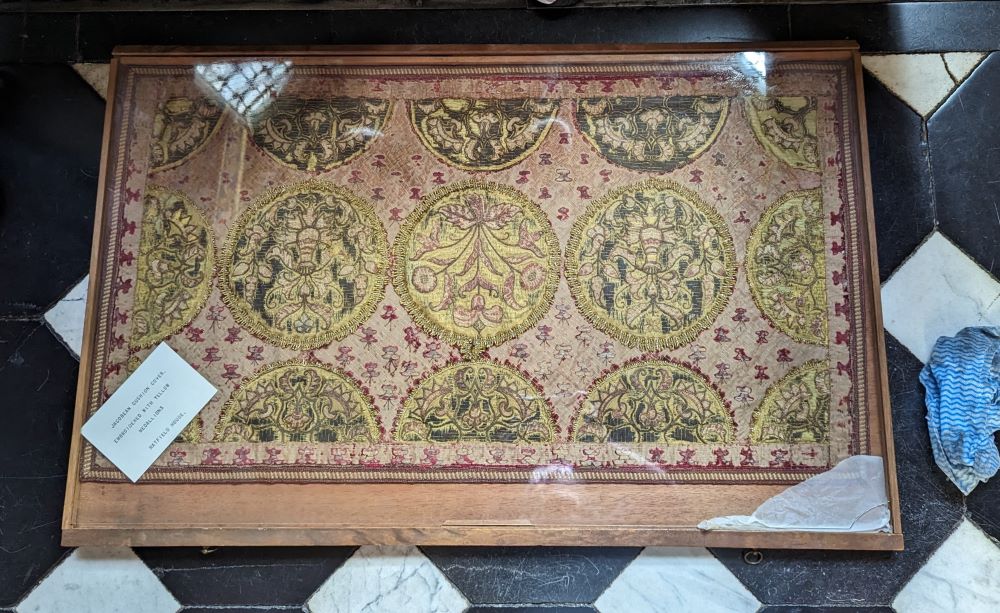
There were two intriguing examples of possible professional embroidery in the collection. The first was a ground of red velvet with medallions of appliquéd yellow satin roundels. Small flower shaped appliqués in a light-coloured silk fabric are placed in a regular pattern over the area of velvet ground between the roundels. They may have been outlined originally but all that remains are three long straight stitches at the top of each, possibly representing stamens. An extensive amount of conservation stitching covers the entire surface. It is stitched in a rather coarse thread worked in parallel lines at different angles on the roundels and on the velvet ground.
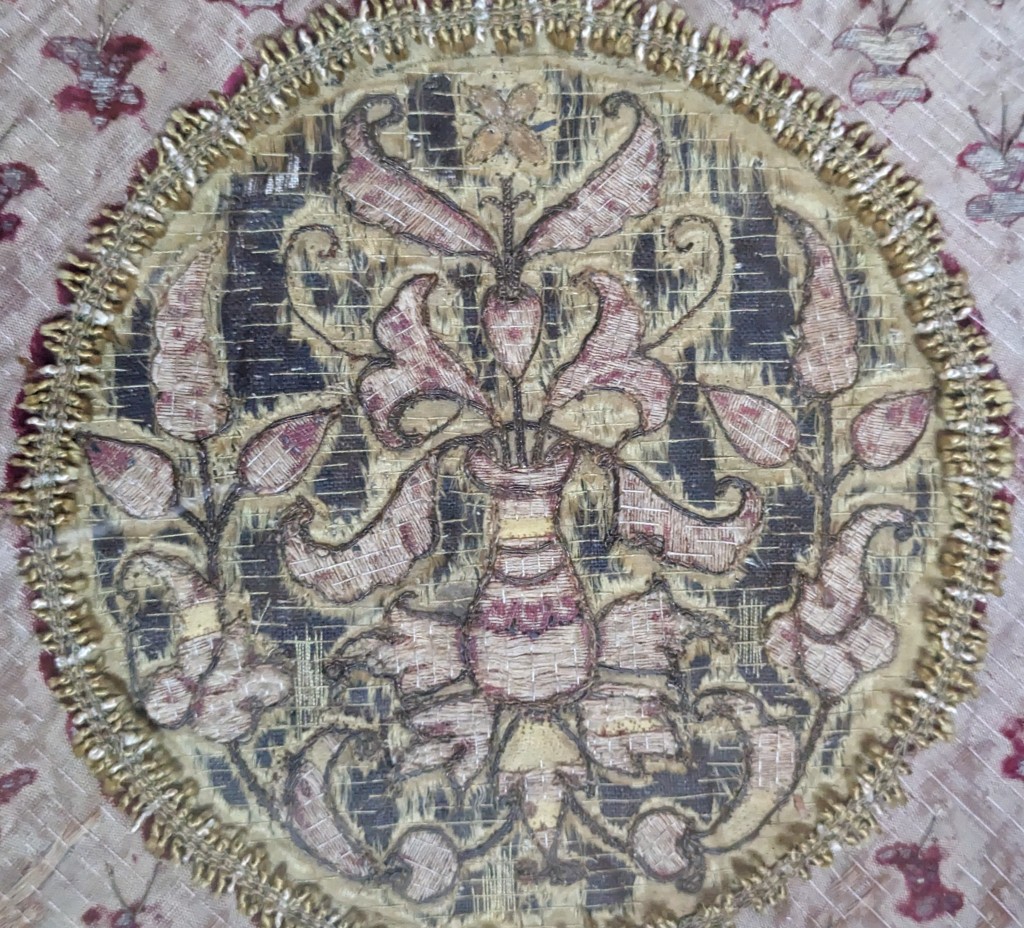

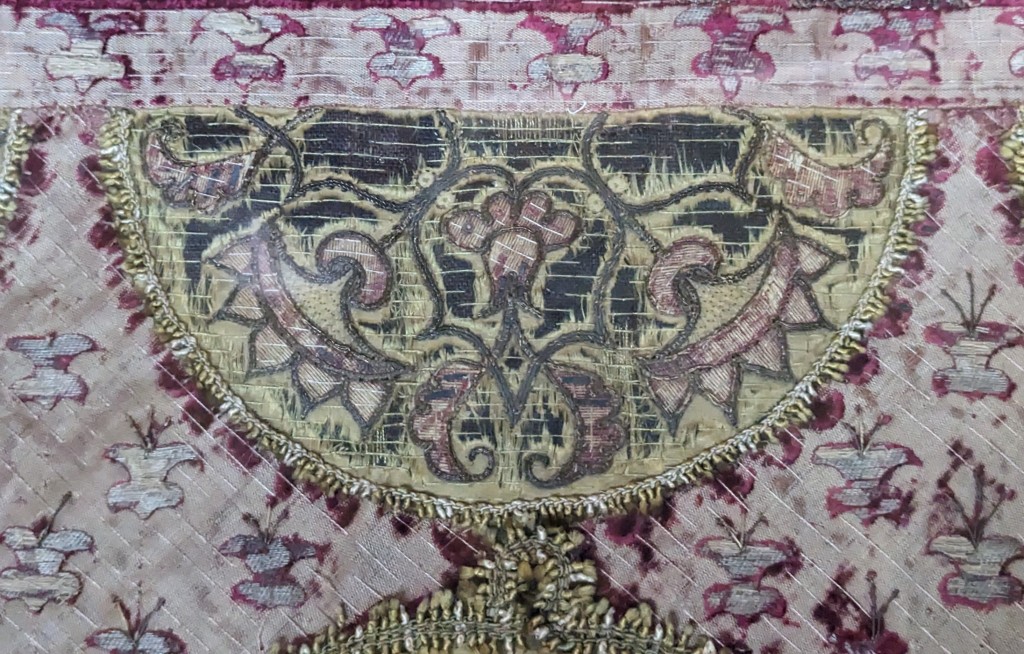
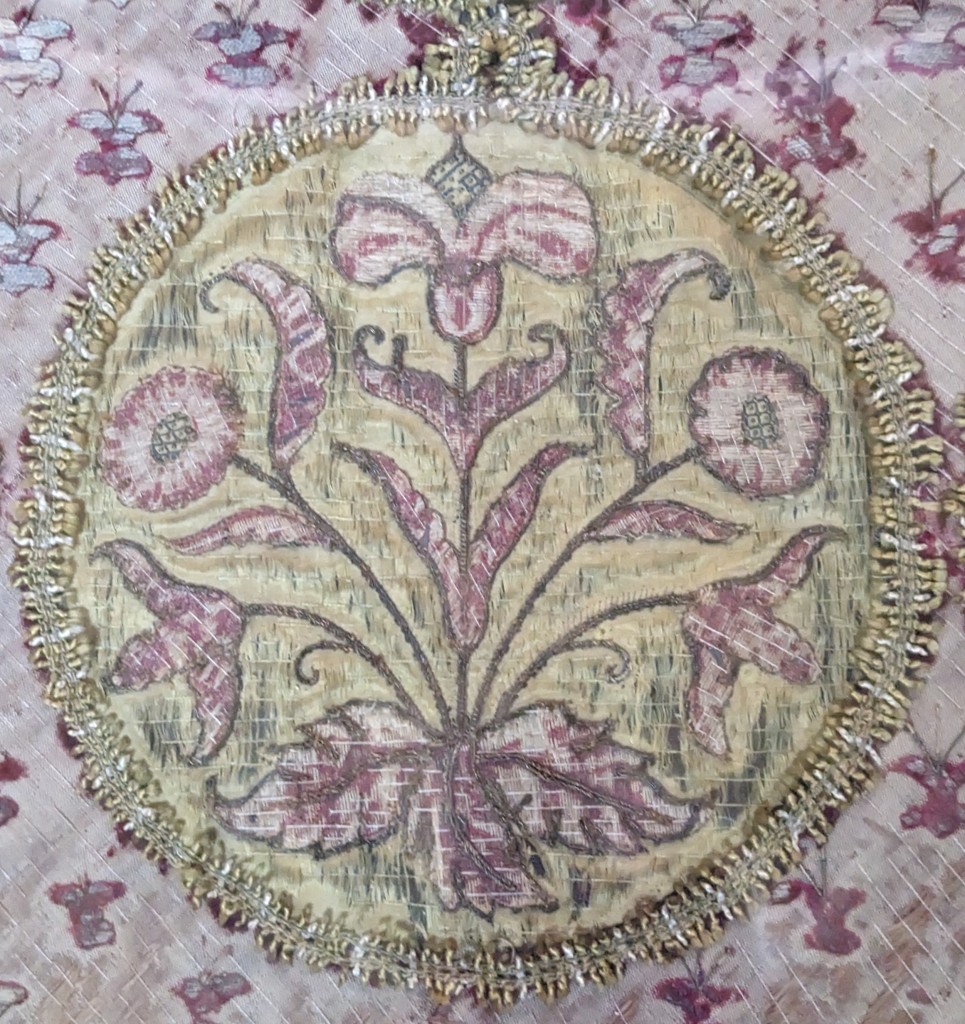
There are three full circles across the centre surrounded by half circles and quarters. It appears that each is appliquéd on a support fabric of black tabby woven fabric which is very unusual. The ground is yellow silk and appliquéd with a stylized floral design. Within the full centre roundel is a sprig of marigold/lily and the two full roundels on either side have a stylized flower shape that is similar to a “conventional” flower motif such as those appliquéd to earlier ecclesiastical vestments and those in the Tudor Pattern Book (Ashmole 1504). All are outlined with a short double fringe. All of the half and quarter circles have the same design: stylized flowers and leaves. Each was, or had been, outlined with the same fringe.
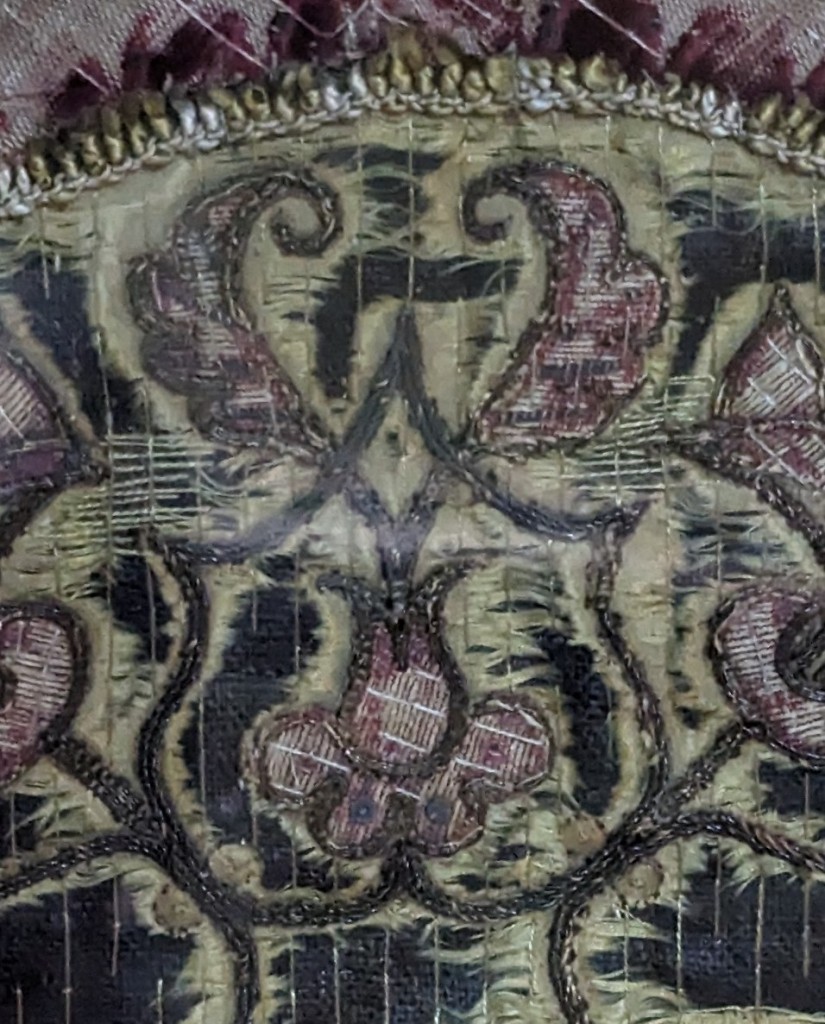
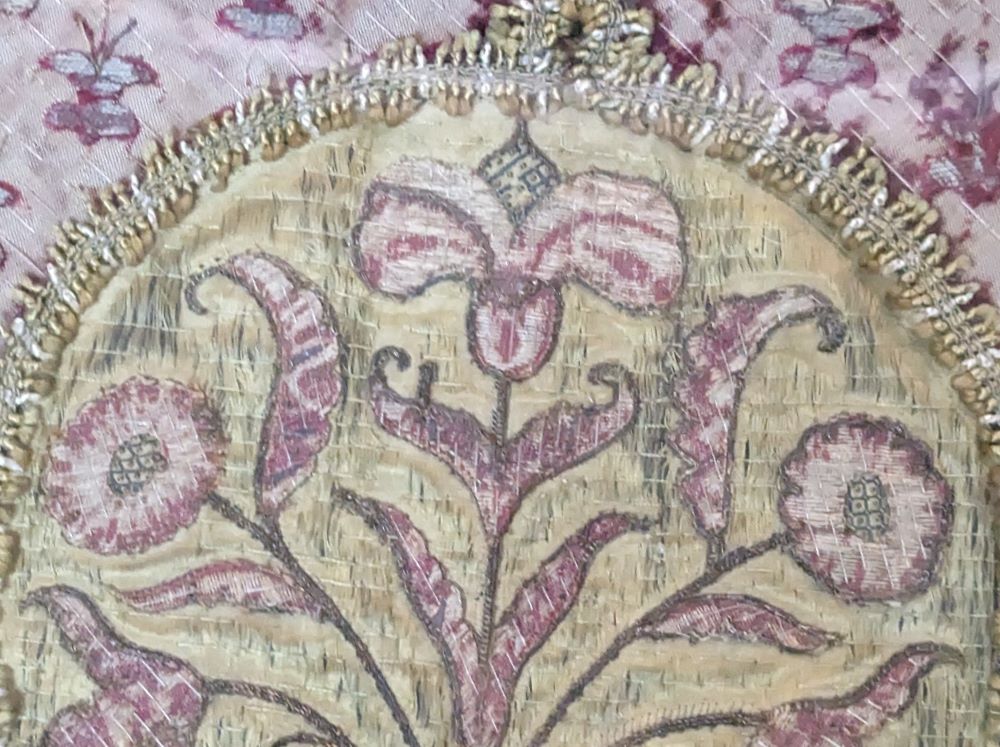
The material used for the leaf and flower shapes may have been a red brocade (?) but it is impossible to tell for sure. All the design elements have been outlined in a filé twist. The appliqués had been further embellished with plate, spangles and possibly even seed pearls but there is very little remaining to indicate how elaborate the original embroidery may have been. The most surviving embellishments are worked in a grid pattern in the centre of the flowers in the marigold/lily design but there is some on one of the half circles as well. I’m hoping Challe’s images have caught some of these details.
It is impossible to tell whether this is an original arrangement of motifs or whether the panel is a compilation of earlier, larger textiles cut down and reassembled to create a whole new item. The date of origin also remains a mystery but the design of the larger circles may help to narrow the possible range. Every object adds a little more information to the database.


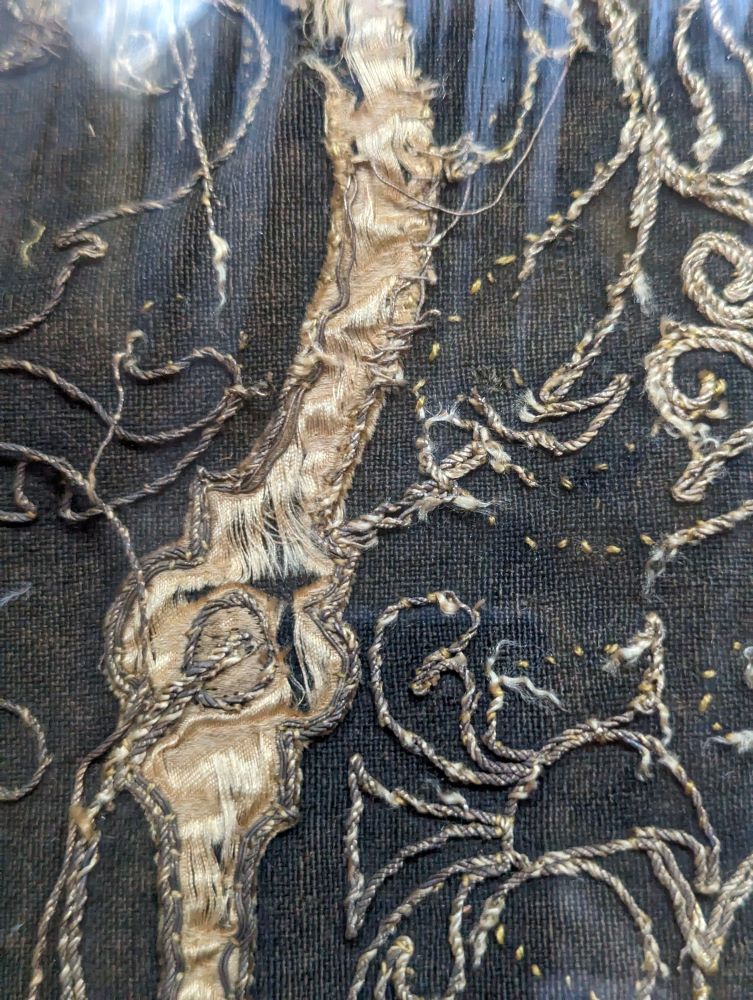
The second cushion of interest is also rather unusual as it also makes use of the black fabric, this time as a ground rather than a support. The overall arabesque design is worked simply in couched filé twist and it puts me in mind of Henry VIII’s red book. However, on the cushion also incorporates an appliquéd strapwork in gold coloured silk satin. The file twist is stitched so that it integrates with the applique by going in and out of what appear to openings in the strapwork. There is a pair of filé threads couched on the inside of the twist outlining the appliqué. I love this design but don’t recall seeing anything that incorporates the arabesque with the strapwork in this manner. I had a look in all the early pattern books I could find but the closest I came was this pattern in the Paganino from 1532. If anyone happens across something closer, please let me know. (Met. 48.40.16)

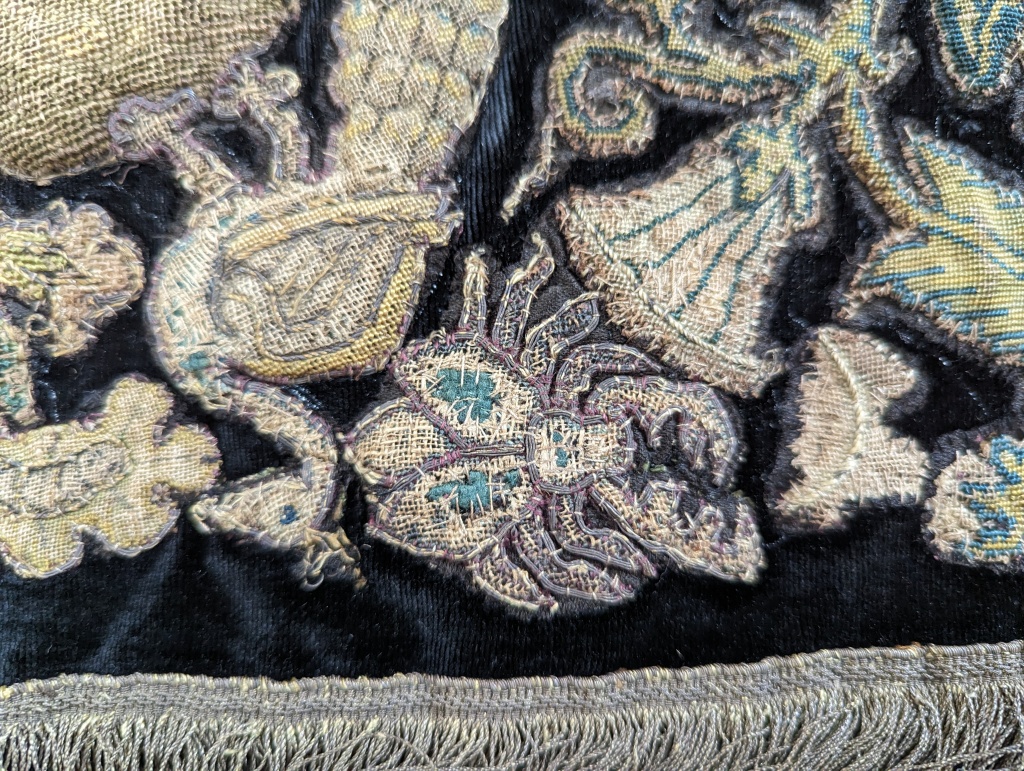
I’ll conclude this post with a couple closeups of insects from a panel with a variety of needlepoint slips and a few of one of the Tudor table carpets. The carpets are in very poor condition and have also been conserved/repaired so much that the original stitching has been obscured. That doesn’t mean that they don’t have information to impart though! Once again, the designs are very unusual and are very much worth investigating…
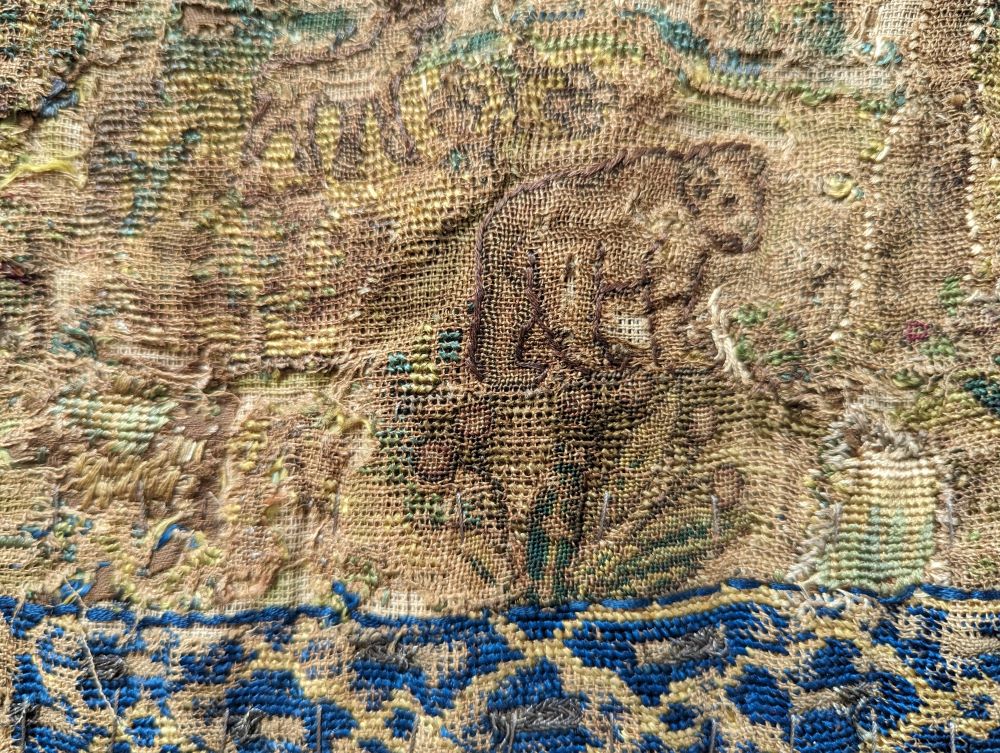
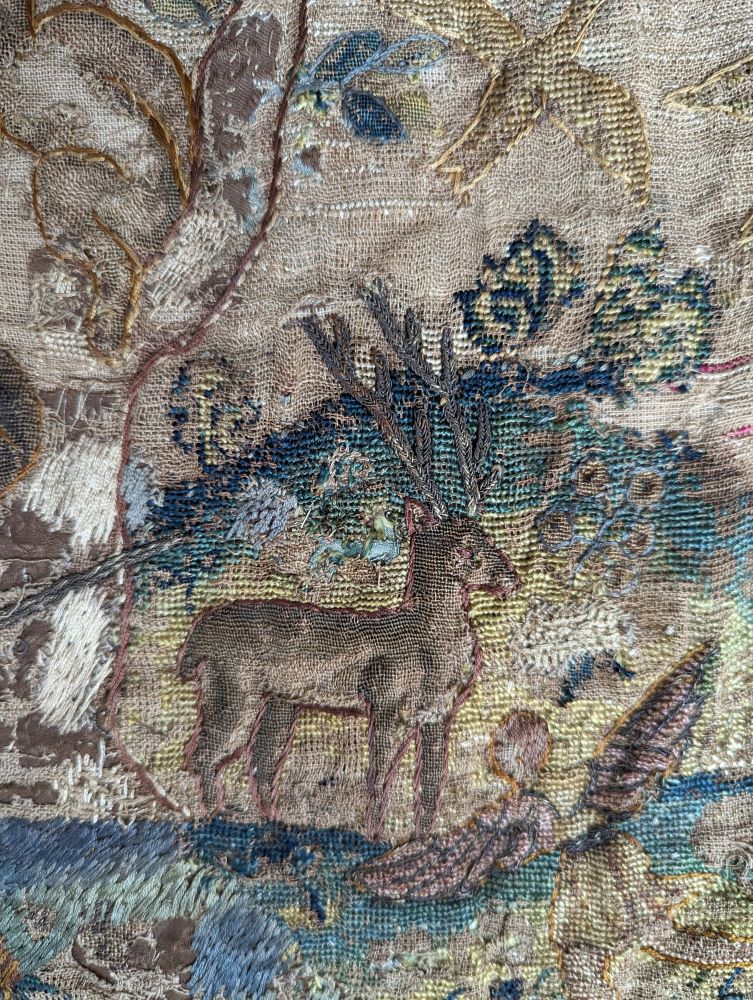
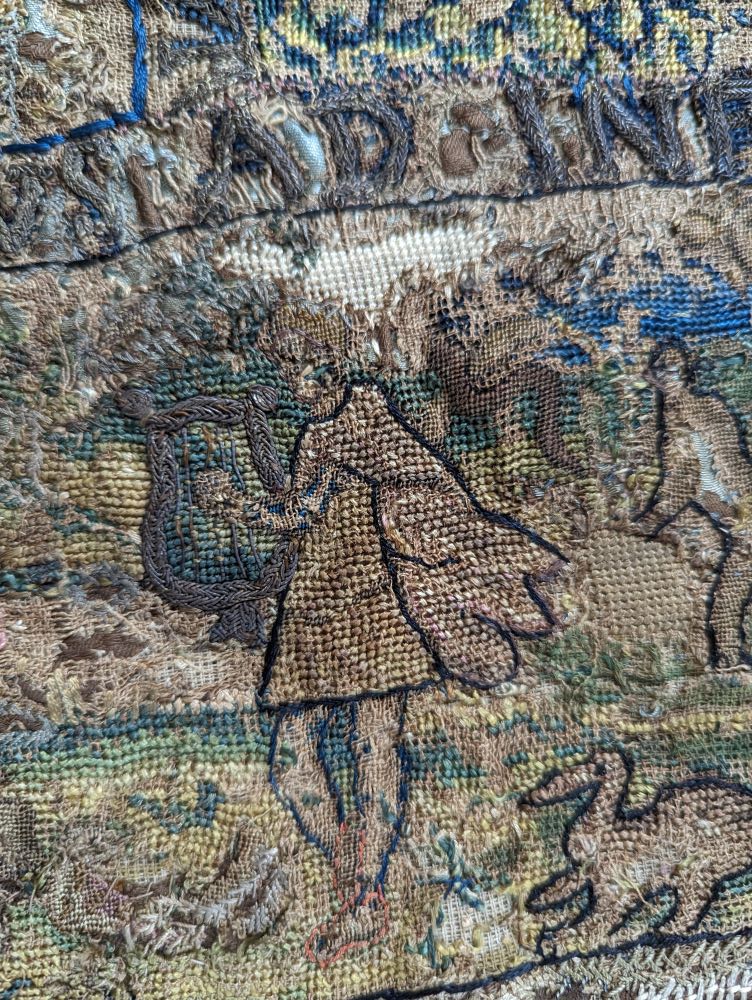

Truly can’t thank you enough for the opportunity to read your good works – such an exciting and intriguing learning process!!! So happy to have stumbled up
Leslie, thank you for enjoying my posts. I feel very fortunate to be able to do this research and my ultimate goal is to share my enthusiasm with anyone who may already be interested and to encourage others to see the benefit and beauty of embroidery – past and present!
Thank you Cindy
Very interesting
Kind regards
<
div>Lesley
Lesley Fudge07734 176426
<
div dir=”ltr”>
<
blockquote type=”cite”>
Thanks for your work.
I’ve learned a lot✌️💙
I’m so grateful for the detailed photos.